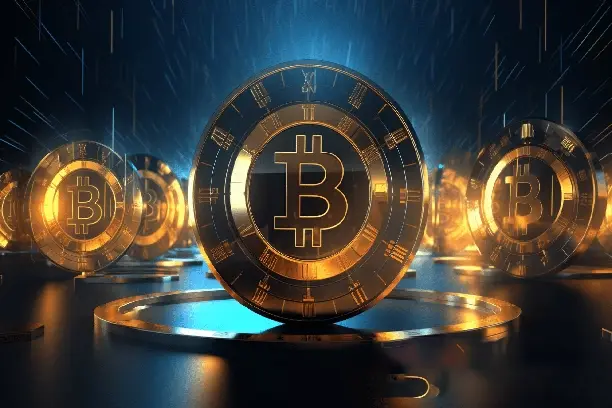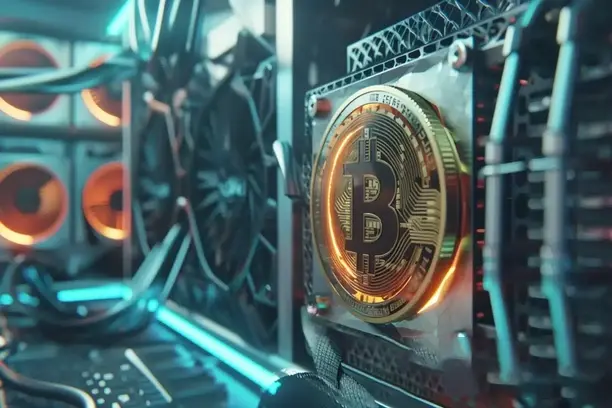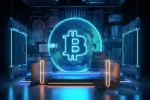SOL Coin, the native token issued by Solana Blockchain, is the core asset behind a highly scalable and efficient blockchain platform. As blockchain technology matures, Solana has attracted the attention of a large number of developers and investors due to its high-speed transaction processing and low handling fee. In this article, we will discuss the basic concepts, technical features, and future prospects of Solana to help readers fully understand its potential value and market dynamics.

What's a SOL coin?
SOL Coin is the native cryptocurrency of the Solana blockchain, and is primarily used to pay transaction fees, participate in blockchain governance, and for staking to secure the network.Solana is a public chain platform that focuses on high performance and low transaction costs, with the goal of becoming the foundation of a decentralized application (dApp) ecosystem that can compete with blockchains such as Ether. SOL Coin is the cornerstone of the ecosystem, and holders can pledge it to receive a return, as well as perform various operations on the platform.
One of the features of the Solana blockchain is its speed and scalability. Compared to traditional blockchains such as Bitcoin and Ether, Solana is able to process tens of thousands of transactions per second with extremely low fees, making it a great potential for the financial, NFT, and Decentralized Finance (DeFi) sectors, and the value of Solana has been highly scrutinized by the market, making it a popular choice for investors.
Solana Blockchain Technology Features
Solana's blockchain technology architecture is at the core of its competitiveness, adopting a unique Proof of History (PoH) consensus mechanism, which is different from Bitcoin's and Ether's Proof of Work (PoW) or Proof of Stake (PoS), and which enables the embedding of timestamps in every transaction, thereby dramatically increasing the network's transaction processing efficiency and enabling tens of thousands of transactions per second. PoH is able to embed timestamps into each transaction, thus dramatically increasing the network's transaction processing efficiency and realizing the ability to process tens of thousands of transactions per second. This feature makes Solana one of the fastest blockchains available.
Solana has also introduced a transaction forwarding technology called "Gulf Stream" that allows transactions to be forwarded to verifiers in advance, further improving the network's responsiveness.Solana's blockchain structure scales easily and does not significantly increase the burden on the network as the number of users grows, which gives it an advantage in large-scale applications.
Scenes of SOL Coin Use
SOL Coin has a wide range of applications. In addition to being used as a payment tool for transaction fees, it can also be used in areas such as network governance, pledging for revenue, and supporting decentralized finance (DeFi). Holders can pledge SOL coins to participate in the blockchain operation and validation process, and receive the corresponding pledge rewards. Pledging is very simple, and many exchanges such as Binance and FTX offer Solana pledging services.

The Solana blockchain decentralized application (dApp) ecosystem is expanding. Many emerging DeFi protocols, NFT marketplaces, and gaming projects are choosing to operate on the Solana platform, and SOL Coin is playing an important role. For example, Solana-supported DeFi projects such as Serum and Raydium utilize SOL coins for various financial transactions such as lending and liquidity provisioning.
Market Performance of SOL Coin
The market performance of the SOL Coin has been notable, especially since the price of the SOL Coin has experienced significant volatility since the launch of the Solana blockchain.Solana's high-speed transaction processing capabilities and low fees have attracted a large number of developers and investors, which has resulted in the SOL Coin experiencing rapid price growth in 2021 and 2022.
The price of the SOL coin has not been a smooth ride. The volatility of the market, especially the uncertainty of the cryptocurrency market in general, has had an impact on the SOL price. Nonetheless, the strong technical foundation of Solana's blockchain and the growing community of developers make SOL Coin one of the most bullish crypto assets in the long term. According to CoinMarketCap, SOL Coin was once in the top 10 cryptocurrencies by market capitalization and has gradually recovered in 2023, demonstrating its resilience in the market.
The Future Prospects of Solana Blockchain
The future of Solana blockchain is seen as quite bright, especially with the advantages of scalability and high performance, Solana has the opportunity to gain a foothold in many industries.Solana's low transaction fees and high transaction throughput are very attractive to applications that require large-scale transaction processing (e.g., payment systems, e-commerce, etc.). These advantages also make Solana an important infrastructure in areas such as finance, gaming and NFT.
Solana is constantly upgrading its technology and will likely introduce more innovative features and solutions in the future to improve the overall performance and security of the network, and the support of the Solana Foundation and a strong developer community will ensure its long-term growth.
Solana also faces challenges, especially in an increasingly competitive market. With competitors such as EtherChannel, Avalanche and Polygon also focusing on delivering high-performance, low-cost blockchain solutions, Solana's ability to maintain its leadership position will depend on its technological innovation and market acceptance.
Risks and Opportunities of Investing in SOL
It is critical for users interested in investing in Solana to understand the potential risks and opportunities. solana's market is volatile, and despite its strong technical advantages, sharp price fluctuations may impact short-term investors. solana has experienced a number of cyberattacks and outages in the past, which requires investors to be vigilant and pay close attention to the Solana's blockchain security.
Solana's long-term development potential remains promising. Its efficient transaction processing capability, low-cost transaction advantage, and expanding application landscape make Solana poised to become an important player in the blockchain space. For long-term holders, Sol Coin is likely to see steady growth in the coming years.
Conclusion
Solana blockchain is undoubtedly a crypto asset that deserves attention due to its superior technology and mature ecosystem, and SOL Coin, as the core token of the blockchain, has considerable potential in terms of market outlook and long-term value. Investors should decide whether to invest in SOL Coin based on their risk tolerance. Whether Solana can continue to maintain its edge in future blockchain competition will be the key to determining the value of SOL Coin.














